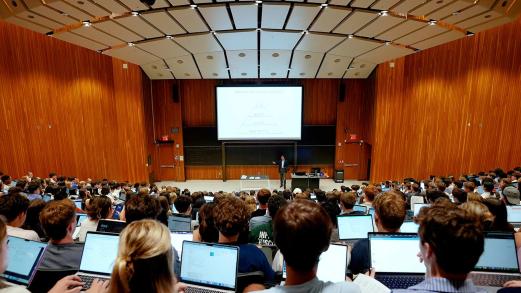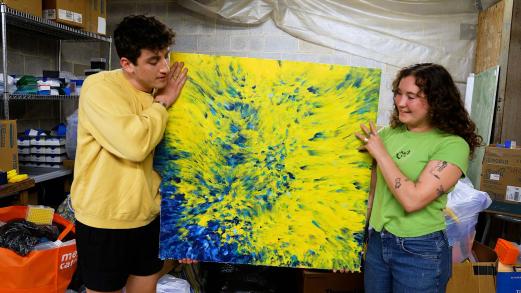[♪ Music Playing ♪]
Spinal Muscular Atrophy or SMA essentially is due to a mutation in the SMN gene that causes not enough survival motor neuron protein to be formed. As a result, children's muscles gradually atrophy. There's damage that's being done that you can't repair.
[♪ Music Playing ♪]
Before there was treatment, the majority of children would unfortunately pass away before the age of two years. 10 to 15 years ago, we didn't have treatments for them, we didn't have a way to slow the progression of the disease. Now, there's a lot more hope for our children and families. Isabelle was born on January 4, 2019. She still wasn't getting any gains. It was almost like maybe she was losing gain, I think that was like the thing, the indication that there's something else going on.
We had never heard of SMA, never read anything about it, it was a complete shock to us. So we saw Dr. Scharf to discuss different treatment options. Gene therapy definitely sounded the most promising. With gene therapy, we deliver the gene that they are missing to the cells of the body. And from that point forward, the gene replicates and it acts as though it's part of the person's own genome. So the protein that the child is missing he or she is no longer missing. The University of Virginia Children's Hospital is one of three children's hospitals in the state of Virginia that offers treatment for children with spinal muscular atrophy.
We are able to offer a gene replacement therapy as well as other gene enhancing therapies for children with SMA. When a child comes to our clinic, they see us as well as orthopedics, cardiology, physical therapy, occupational therapy, speech language and feeding therapy. Being part of a multidisciplinary team allows us to provide optimal care for children and their families. Our knowledge of SMA is greater when we work as a team than if we work in isolation.
[♪ Music Playing ♪]
It's a world of a difference. I mean, she was never able to stand and now as you see she's running around the house. It's been a marathon, and when you take a step back and you just look at how far we've come and you're just like, wow, this is almost impossible. Being able to see children in their first swim lesson or getting a new dog and being able to take them for a walk, those are the things life is made of. And I'm very grateful for the chance to be able to watch children thrive when previously we didn't have treatments to offer them. The fact that we now have treatments that really prolong life in these children is changing my concept of these diseases.
If we have these medical advances now, how encouraging is it about what we're going to have in store for us in 5 and 10 years for these neuromuscular conditions?
[♪ Music Playing ♪]















